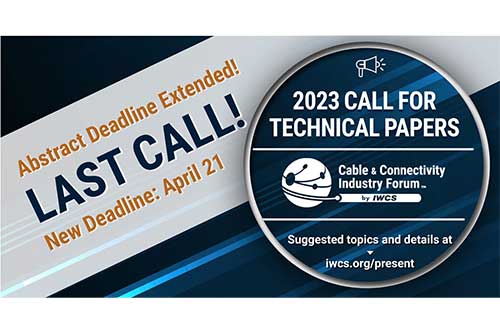SubOptic 2019 Day 3 Keynote
 SubOptic 2019 Blog
SubOptic 2019 Blog
April 10, 2019
Day three of SubOptic 2019 opened with Cyborg Anthropologist Amber Case, author of the book “Calm Technology.”
“Could you all hold up your phones really quickly?” she asked her audience filling the Mardi Gras Ballroom.
Some did hesitantly, others quickly. But in the end, almost everyone in the room held their phone aloft.
“I want to tell you,” said Case, “you are all cyborgs.”
According to the proper definition, she said, a cyborg is any living thing that uses external technology to adapt to their environment. According to Case, the most extreme example of this is an astronaut, who uses a suit to survive the vacuum of space.
“Cyborg Anthropology is a real field of study,” Case assured her listeners. It was accepted as a subdiscipline of anthropology in 1992.
Unlike other branches of anthropology that involves examining other cultures and populations, Cyborg Anthropology takes a hard look at how people in the most modern of situations are adapting to using new technologies.
“We need to actually look at ourselves… and say ‘actually, we’re the weird people.’”
Our daily lives are increasingly dominated by our technology. Our attention is almost constantly taken by automated alerts by our phones. We have redundancies built upon redundancies, like the watch that reports the same alerts as our phone, which has the same email as our computer.
Case quoted a projection by Cisco that expected 50 billion devices to be online worldwide by 2020.
Given this reality of technology in modern life, Case, in her speech, asked a very interesting question of the Submarine Telecoms Industry: “Is it good to have everything be smart?
She told the story of the “Smart Refrigerator.” Engineers were interested in creating the bleeding-edge refrigerator design. It would be blue tooth enabled, capable of alerting you when bananas start to go bad, with a thumbprint reading lock on the handle that could be set by the user, for those that wanted to avoid impulse eating
“Bananas already tell you when they’re going bad,” Case said. “And what happens if you’re cooking and have flour on your hands?” Basically, what would be the point of a refrigerator with so many over-engineered features?
“I don’t know about you, but I don’t want to be a system administrator in my own home.”
This was the first appliance in what Case called the “Dystopian Kitchen of the Future,” where every item was a networked security risk, that was voice activated but worked about as well as current voice-controlled AIs and sent us constant alerts. Everything smart, but made by many different companies, none of which communicated to each other.
“So, we have this interruptive technology,” Case said. “It’s interruptive in that everything is vying for your attention.”
This brought her to the true purpose of her speech: Calm Technology.
According to Case, the term calm technology was coined by PARC Researchers Mark Weiser and John Seely Brown in the 90’s in response to the increase of interruptive technology that required our attention regularly, regimenting our lives through active alerts and constant information dumps.
Quoting Weiser, Case said “A good tool is an invisible tool. By invisible, we meant that the tool does not intrude on your consciousness; you focus on the task, not the tool.”
According to case, a book is a calm technology. You don’t think about the medium when you read. Only the story. “When written well, you fall into the book.”
Electricity is another calm technology, in that we don’t think about how the lights work until the electricity fails.
“Technology should empower our peripheral attention,” Case said. If attention is the scarcest resource in this modern world, you have to learn to provide the most information with the least amount of attention.
In her speech, Case gave her guidelines to creating calm technology, following principles like “Technology should communicate, but doesn’t need to talk.” Or, “technology should amplify the best of humanity.” In that vein, machines should act like machines, not humans and vice versa.
A great example of this, Case said, is Google. With this, machines aggregates information faster than any human could, but the human than curates that information and makes any decisions about what to use – a clear symbiosis of human and machine.
“We’ve forgotten the concept of cybernetics,” said Case. “It’s humans alongside machines and machines alongside humans.”
More about the principles of calm technology can be found on Case’s website https://calmtech.com/index.html.
 SubOptic 2019 Blog
SubOptic 2019 Blog









